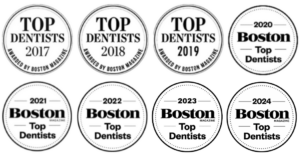How to Spot Tongue-Tie in Adults: Common Signs and Symptoms
Tongue-tie, also known as ankyloglossia, is a condition that affects many people, yet it is often overlooked or misdiagnosed. It occurs when the tissue under the tongue, called the frenulum, is too short or tight, limiting the tongue’s range of motion. This can cause a variety of symptoms, including speech difficulties, swallowing problems, and even chronic pain. In this blog, we will discuss how to spot tongue-tie in adults by identifying common signs and symptoms.
Speech Difficulties: One of the most common signs of tongue-tie in adults is speech difficulties. The tongue is a crucial muscle used to form sounds and speak clearly. If the frenulum is too short or tight, it can limit the tongue’s range of motion, making it difficult to enunciate certain words or sounds. This can lead to speech impediments, such as a lisp, stutter, or difficulty pronouncing certain letters or words.
Swallowing Problems: Tongue-tie can also lead to swallowing problems in adults. The tongue plays a vital role in the swallowing process by pushing food and liquids to the back of the throat. If the frenulum is too tight, it can restrict the tongue’s movement, making it difficult to swallow properly. This can cause choking, gagging, or even difficulty breathing while eating or drinking.
Chronic Pain: In some cases, tongue-tie can cause chronic pain in adults. The limited movement of the tongue can lead to tension and strain in the muscles of the jaw, neck, and shoulders. This can cause headaches, neck pain, and even back pain. Additionally, tongue-tie can lead to temporomandibular joint (TMJ) disorder, a condition that affects the jaw joint and can cause pain, clicking, or popping in the jaw.
Dental Problems: Tongue-tie can also lead to dental problems in adults. The restricted movement of the tongue can make it difficult to maintain good oral hygiene, which can lead to cavities, gum disease, and other dental issues. Additionally, tongue-tie can cause a gap between the front teeth, which can affect the appearance of the smile.
Fatigue and Irritability: Adults with tongue-tie may also experience fatigue and irritability due to the strain on the muscles of the jaw, neck, and shoulders. This can cause difficulty sleeping, which can lead to daytime fatigue and irritability.
Diagnosing Tongue-Tie in Adults
If you are experiencing any of the symptoms listed above, it is essential to seek medical attention to determine whether you have tongue-tie. A healthcare professional, such as a dentist, speech therapist, or pediatrician, can diagnose tongue-tie by examining the frenulum and observing the tongue’s movement.
Treatment for Tongue-Tie in Adults
The treatment for tongue-tie in adults depends on the severity of the condition and the symptoms experienced. In some cases, tongue-tie may not require any treatment, and symptoms may improve over time. However, if symptoms are severe, treatment may be necessary.
The most common treatment for tongue-tie in adults is a frenectomy, a simple surgical procedure that involves cutting the frenulum to release the tongue’s movement. This procedure is usually done under local anesthesia and can be performed by a dentist or oral surgeon.
Speech therapy may also be recommended for adults with tongue-tie to improve speech and swallowing abilities and reduce pain and tension in the muscles of the jaw, neck, and shoulders.
Conclusion
Tongue-tie is a common condition that affects many adults, yet it is often overlooked or misdiagnosed. By recognizing the common signs and symptoms of tongue-tie, you can seek medical attention and receive appropriate treatment to improve your speech, swallowing, and overall quality of life. If you experience any of the symptoms listed above, it is essential to speak with a healthcare professional to determine whether you have tongue-tie and what treatment options are available to you.
If you’re looking for high-quality dental care in Lexington, look no further than Lexington Smile Studio. Our wide range of services includes cosmetic dentistry, prosthodontics, implant dentistry, periodontics, and laser dentistry. We also offer CO2 laser tongue-tie release for infants, children, and adults. Don’t wait any longer to get the dental care you need. Contact us today to schedule your appointment and experience the benefits of Lexington cosmetic dentistry and laser tongue-tie release.



